
House on Wheels - a gift for Alena Šrámková
Source
FA ČVUT, Praha
FA ČVUT, Praha
Publisher
Tisková zpráva
18.11.2019 18:20
Tisková zpráva
18.11.2019 18:20
Czech Republic
Prague
Dejvice
Alena Šrámková
John Hejduk
A gift from the students and faculty of the FA CTU to Alena Šrámková for her birthday
In the courtyard of the Faculty of Architecture CTU in the Dejvice campus, students from the Seho Studio of the Institute of Design II built it based on sketches by the American architect John Hejduk. It was also a gift for the thirtieth anniversary of the Velvet Revolution, during the academic celebration of which the sculpture was unveiled. The fact that students were able to realize it is the best expression of the freedom they gained.
John Hejduk was an American educator and architect with Czech roots. He dedicated the sculptures House of the Suicide and House of the Mother of the Suicide to Václav Havel and the Czechoslovak people, commemorating the death of Jan Palach. “He was the first Western architect to bring his work to Prague after the Velvet Revolution. This year he would have celebrated his 90th birthday, just twenty-nine days later than Alena Šrámková… This is our gift for their birthdays,” explains Hana Seho, head of the studio.
Hejduk was a member of the New York Five, one of the pillars of postmodern architecture, as an architect. In addition to several buildings, he realized many objects with his collaborators and students that balance on the border of architecture and sculpture. He cared for his students. For 25 years, he was the dean of the School of Architecture at Cooper Union College in New York, which during his tenure supported scholarships for all talented individuals who would otherwise not be able to study at the school for economic reasons.
The project The Rolling House was created as part of the Summer Building School on the topic of minimal mobile construction organized by the Seho Studio. The construction took place in the courtyard of FA CTU at the turn of October and November. There were no plans for the building. Students only had a sketch they discovered in the book Vladivostok by Hejduk’s collaborator and editor of his books, Kim Shkapich. While preparing the drawing documentation, they also learned from other Hejduk works, particularly from the catalog for the exhibition Work in the Míčovna of Prague Castle (1991). They consulted the project with Hejduk’s daughter Renata and through her with Hejduk's colleagues and successors.
The simple mass of the building is enhanced by symbolic elements for the house, a cylindrical balcony, a weather vane resembling an antenna, and a light well shaped like a chimney. The outer shell consists of sheet metal plates secured with visible joints featuring precise geometric divisions, while the inner cladding is made of painted plywood. The open interior space is complemented by three tiers of "seating" for observing the hustle and bustle in the courtyard of the school. Both outside and inside, the building is black, highlighting its shape richness and standing out beautifully on the terracotta pavement. Like many of Hejduk's other concepts, the house is mobile. The chassis is produced by the Faculty of Mechanical Engineering CTU, and the collaboration between faculties was a mutually enriching added value.
The fact that the object stands in the courtyard of the Faculty of Architecture is not coincidental. Here, there had been consideration of placing Hejduk’s sculptures House of the Suicide and House of the Mother of the Suicide, which were eventually realized in Palach Square. It was these sculptures that served as models for students in solving the details of The Rolling House. The installation at the Faculty of Architecture CTU is accompanied by an exhibition in the form of pictograms and posters on the glass wall of ArchiCafé. It will be on display here until February 2, 2020.
Project educational leadership: Hana Seho
Author team: Anita Černá, Jakub Daniel, Eva Eöllösová, Jiří Foller, Kateřina Grejtáková, Monika Jůzová, Zuzana Krištofíková
Assisted and consulted: Matěj Dědek, Pavel Halgaš, Vendula Hladoníková, Daniel Homola, Roman Hrabánek, Míša Chitovová, Kryštof Krupanský, Jan Podolka, Štěpánka Poučová, Jaroslav Smejkal, Pavel Struhař, Martin Tauer, Katarína Tomášiková, Sára Trojovská
More information >
In the courtyard of the Faculty of Architecture CTU in the Dejvice campus, students from the Seho Studio of the Institute of Design II built it based on sketches by the American architect John Hejduk. It was also a gift for the thirtieth anniversary of the Velvet Revolution, during the academic celebration of which the sculpture was unveiled. The fact that students were able to realize it is the best expression of the freedom they gained.
John Hejduk was an American educator and architect with Czech roots. He dedicated the sculptures House of the Suicide and House of the Mother of the Suicide to Václav Havel and the Czechoslovak people, commemorating the death of Jan Palach. “He was the first Western architect to bring his work to Prague after the Velvet Revolution. This year he would have celebrated his 90th birthday, just twenty-nine days later than Alena Šrámková… This is our gift for their birthdays,” explains Hana Seho, head of the studio.
Hejduk was a member of the New York Five, one of the pillars of postmodern architecture, as an architect. In addition to several buildings, he realized many objects with his collaborators and students that balance on the border of architecture and sculpture. He cared for his students. For 25 years, he was the dean of the School of Architecture at Cooper Union College in New York, which during his tenure supported scholarships for all talented individuals who would otherwise not be able to study at the school for economic reasons.
The project The Rolling House was created as part of the Summer Building School on the topic of minimal mobile construction organized by the Seho Studio. The construction took place in the courtyard of FA CTU at the turn of October and November. There were no plans for the building. Students only had a sketch they discovered in the book Vladivostok by Hejduk’s collaborator and editor of his books, Kim Shkapich. While preparing the drawing documentation, they also learned from other Hejduk works, particularly from the catalog for the exhibition Work in the Míčovna of Prague Castle (1991). They consulted the project with Hejduk’s daughter Renata and through her with Hejduk's colleagues and successors.
The simple mass of the building is enhanced by symbolic elements for the house, a cylindrical balcony, a weather vane resembling an antenna, and a light well shaped like a chimney. The outer shell consists of sheet metal plates secured with visible joints featuring precise geometric divisions, while the inner cladding is made of painted plywood. The open interior space is complemented by three tiers of "seating" for observing the hustle and bustle in the courtyard of the school. Both outside and inside, the building is black, highlighting its shape richness and standing out beautifully on the terracotta pavement. Like many of Hejduk's other concepts, the house is mobile. The chassis is produced by the Faculty of Mechanical Engineering CTU, and the collaboration between faculties was a mutually enriching added value.
The fact that the object stands in the courtyard of the Faculty of Architecture is not coincidental. Here, there had been consideration of placing Hejduk’s sculptures House of the Suicide and House of the Mother of the Suicide, which were eventually realized in Palach Square. It was these sculptures that served as models for students in solving the details of The Rolling House. The installation at the Faculty of Architecture CTU is accompanied by an exhibition in the form of pictograms and posters on the glass wall of ArchiCafé. It will be on display here until February 2, 2020.
Project educational leadership: Hana Seho
Author team: Anita Černá, Jakub Daniel, Eva Eöllösová, Jiří Foller, Kateřina Grejtáková, Monika Jůzová, Zuzana Krištofíková
Assisted and consulted: Matěj Dědek, Pavel Halgaš, Vendula Hladoníková, Daniel Homola, Roman Hrabánek, Míša Chitovová, Kryštof Krupanský, Jan Podolka, Štěpánka Poučová, Jaroslav Smejkal, Pavel Struhař, Martin Tauer, Katarína Tomášiková, Sára Trojovská
More information >
The English translation is powered by AI tool. Switch to Czech to view the original text source.

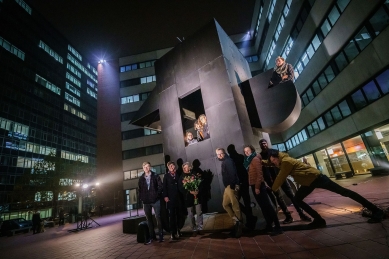
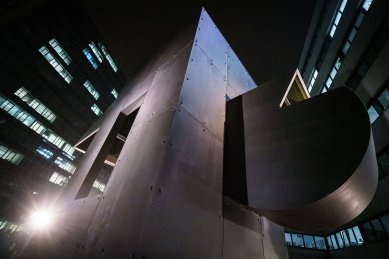
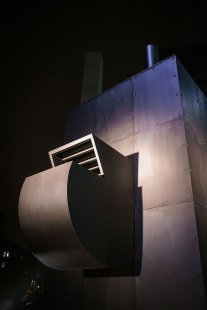
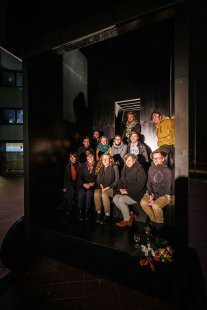
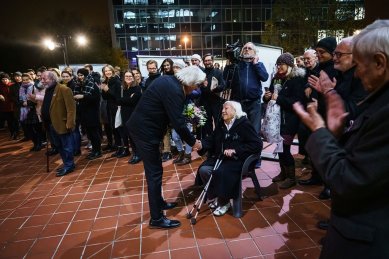

0 comments
add comment
Related articles
0
16.11.2021 | House on Wheels - On the Way to John Hejduk - Book Launch
0
26.10.2021 | Luis Marques: John Hejduk. To the new autonomy of architecture
1
04.01.2020 | To the exhibition of Alena Šrámková at Museum Kampa
0
25.10.2019 | Šrámková selected 17 of her favorite buildings for her exhibition
0
18.06.2019 | Alena Šrámková will celebrate her 90th birthday













